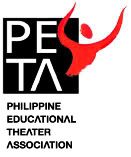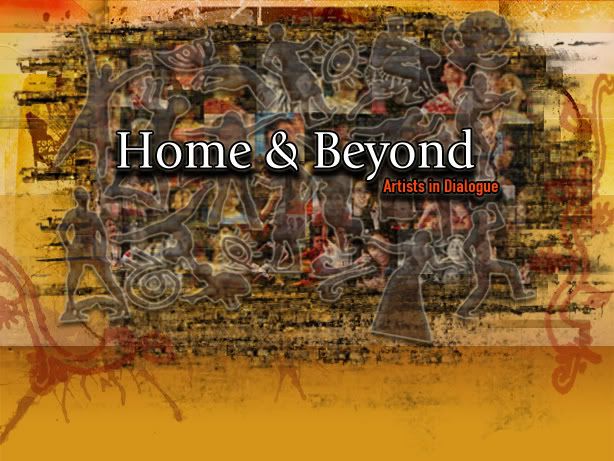ABOUT US

Home and Beyond is an integrated communication tool for the PETA members, staff and partners of the PETA Mekong Partnership Project. It consists of a weblog and occasional e-newsletter containing project news updates, reflections, journals, messages written for internal reading/sharing of members and alumni of PETA and its Project partners.
Members can share their thoughts and reflections on our practice of theater and cultural work within and beyond the boundaries of our “homes”.
Home and Beyond provides avenues for a more informal exchange and open dialogs among performing artists, theater/drama practitioners, and cultural workers from the Southeast Asia Region to encourage critical reflections and sharing of insights on theater and cultural work.
This also aims to maintain closer communication links and relationships between and among PETA members and Project partners through the sharing of personal experiences, opinions, feedbacks, and reflections on our respective roles as artists.
WRITE IN!

Members, staff, and partners are encouraged to post short articles, their encounters or thoughts on theater praxis and cultural work, and share photos on the weblog.
We request that members, staff, and partners who own Gmail accounts to email us at
peta.sea.group@gmail.com, so that we may add you to the list of Contributors. If you are not familiar with posting on a blog, you may also send them via email to
peta.sea.group@gmail.com and we shall be the ones to post it for you.
Timely entries will be featured in the occasional Home and Beyond e-newsletter and sent to members and partners of PETA via email.
PHOTO GALLERY
JOURNAL ARCHIVES
LINKS
Wednesday, 10 October 2007
Archives: In Search of a New Paradigm - Jose Jay B Cruz
In search of a new Paradigm
Thoughts about the round table discussion
Making Cities More Human
Instituto Cervantes Manila
July 31 2007
I am writing to express why I think conferences like “Making Cities More Human" an important achievement and why events like these have to be commended in the hope that cultural institutions like Instituto Cervantes, in the hands of directors with vision, pursue activities that fills up the gap in creating a real valuable cultural cooperation between countries of colonial relationship just like the Philippines and Spain.
I am writing to exercise my option to care about things that are important. I am writing having understood after the discussion that there are big questions but the answers are initiated by caring about small things. If one cannot work from top to bottom one has the option to work from bottom to the top. I am writing because I want to salvage the last remaining bits of idealism in me that the two senior spanish gentlemen have not lost as shown in their work.
Manuel Delgado Ruiz’s radical ideas about issues regarding cultural heritage is a goldmine that supplies the necessary shifts in paradigm needed to view big questions of the 21st century. It is a helpful perspective regarding conflict management in urban settings vis a vis issues in space and territory. In his view, I have come to realize that even cultural heritage is a continuing negotiation between people from different sectors occupying the same space and/or reality. That in our streets are found the most obvious path in understanding the cultural psyche and that instead of walking past through it annoyed and dismissive, one can spend a little more time in seeking why it is such.
Senior Ruiz’s idea that “prostitutes” can be considered a cultural heritage because through them we find a glimpse of a living culture is a radical shift in paradigm in understanding the length and breadth of the concept of heritage and patrimony. Cultural heritage is not just the conservation of historical landmarks. Misled cultural preservation could be just sentimentalism harking about things that have come and gone. Coming and going is a perennial reality of life. There is nothing we could do about it. But the definition of a cultural heritage that will empower the lives of the next generation and ensure a much better life is on a daily basis negotiated in the street of Manila. We are all living cultural heritage in action. It is not just some old hispanic building that is iconic of a period in history.
As an artist struggling within the post colonial discourse, it is important that I see myself as a living agent of cultural heritage. Because in this new perspective I have freed myself from the guilt ridden authentic versus exotic construct. In this new view, every individuals reality and voice partakes of the many voices that defines a culture. A culture is the summation of all these.
But, in this new view too, an artist has to be aware of other voices that he may not be listening to. It is not a singular voice. It is also the voice of the workers, the scavenging communities in payatas, the street vendors that clog the major thouroughfares in Manila, the jeepney drivers who romps the street unmindful of road lanes and designated stops, the afternoon crying faces in the T.V show Wowowee, the baduy movies in Pinoy Box Office. They are all part of a cultural heritage that we don’t want to dismiss lest we keep ourselves divided and left in the middle of that dichotomy, puzzled and clueless.
The street as a living space seems to be a very simple idea. But in further examination one can extract from it valuable insights in understanding something more profound. The interaction that transpires in our street whether in harmony or in opposition creates the cultural identity. The social issues that springs and evolves therein create a national identity. It’s funny that we have been searching for that identity when the answer was just right in front of us. It is funny that a simple perspective presented to us opened a big window to that perennial question.
The same perspective, if given much thought and seriousness could fill the gap between art and entertainment. Public spaces can be seriously seen as an alternative venue to expand the awareness of a population whose limited exposure to TV needed a more diverse exposure into the Arts.
Given this perspective it becomes relevant that a continued dialogue between individuals, sectors and cultures become the paramount call for action. Heightened interaction, inclusion. In other words increased social capital - a core concept in business, economics, organizational behaviour, political science, and sociology, defined as the advantage created by a person's location in a structure of relationships.
Andres Perea Ortega’s new model is a utopian society in the form of la Ciudad Administrativa Multi- Funcional de Corea. From the realm of ideas brought to us by Ruiz, Ortega in turn brought us to the realm of reality. A city in peripheral – ring type structure that ambitiously claims its design is an unwritten book that will allow its citizen to write their own history.
I can’t help but be awed by the guts of this architect to herald a city with no spaces of representation, no historical building, no iconic landmark. It is a true revolution in idea which invites a monumental debate. In this construct, it aspires to dissolve the division of a public and private sector where respect and integration of citizens are addressed. It aspires for harmony between nature and building. It is genius and willful in finding an architectural solution in the increasing aggression of urban living in the 21st century. It is mind blowing.
With these new perspectives we are given a living example of individuals who embrace reality and pursue alternatives of seeing the world to find a process that allows a change. It is important that we meet people like these as a living testament that idealism itself takes on a different meaning. It is not keeping grimly and determined with your idea of what life should be but in accepting how life is as you experience it and shifting your perspective to attain maybe, a more appropriate ideals. I have understood that to teach people to think differently is probably not to dump ideas as much as you can but to find an infrastructure that can allow that change. It’s a healthier way to see the world. A kinder way.
As an artist born in a country of a colonial history, the bulk of my work is to find a new perspective to see my world and discover an infrastructure that could work for me. Then I can also spell what kind of a cultural cooperation is good for me. What kind of a paradigm in terms of cultural exchange I should aspire for. It should be a paradigm that allows a mutual discovery of unforeseen possibilities. A paradigm that will entail an infrastructure wherein I can increase not only interaction but also negotiation to empower myself. Then in return I can go back to them and present my discovery in the form of a new shift in perspective. In that case they are also learning from me.
- Jose Jay B Cruz
PETA SEA Group

 Home and Beyond is an integrated communication tool for the PETA members, staff and partners of the PETA Mekong Partnership Project. It consists of a weblog and occasional e-newsletter containing project news updates, reflections, journals, messages written for internal reading/sharing of members and alumni of PETA and its Project partners.
Home and Beyond is an integrated communication tool for the PETA members, staff and partners of the PETA Mekong Partnership Project. It consists of a weblog and occasional e-newsletter containing project news updates, reflections, journals, messages written for internal reading/sharing of members and alumni of PETA and its Project partners. 